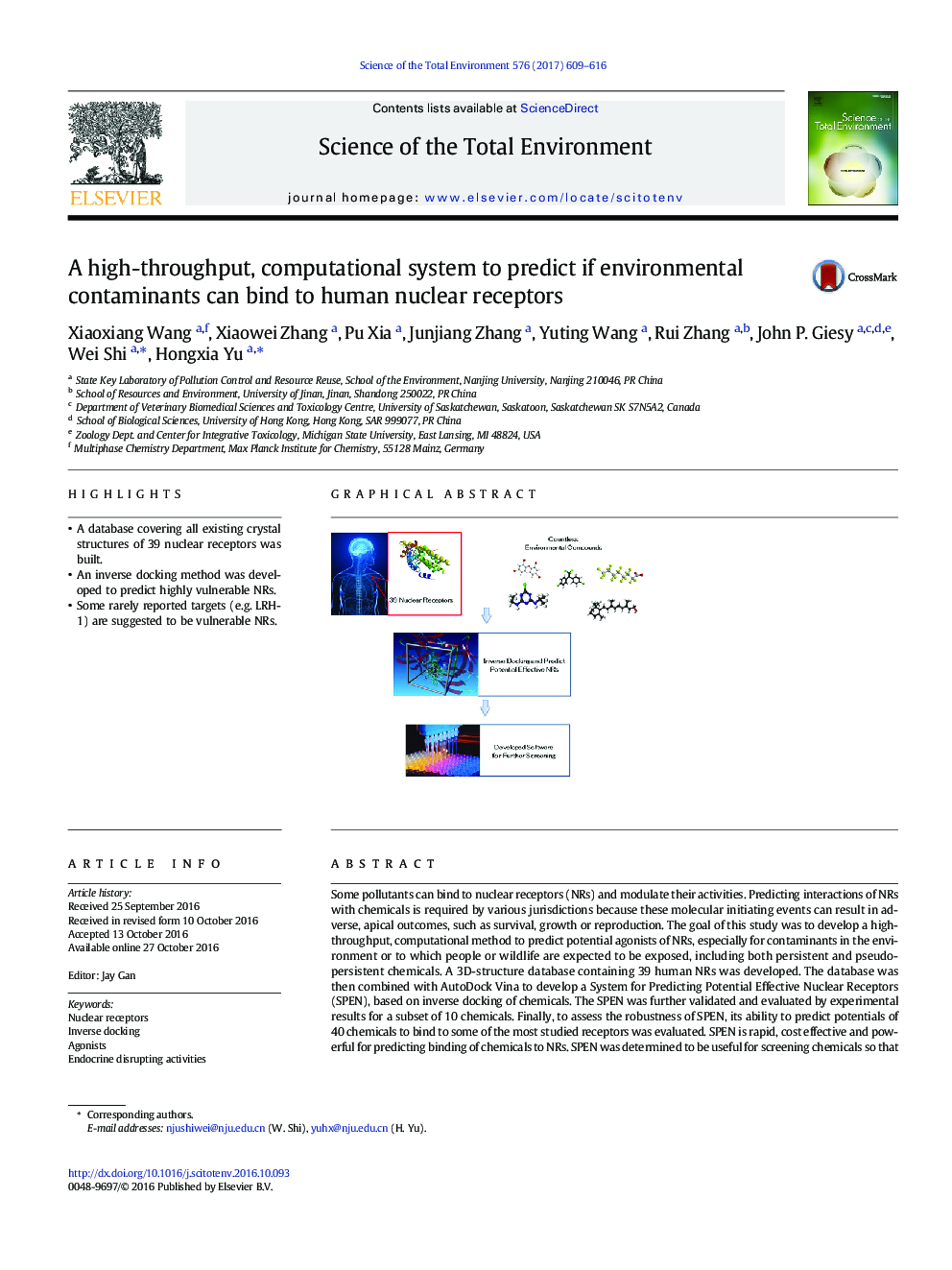| Article ID | Journal | Published Year | Pages | File Type |
|---|---|---|---|---|
| 5752004 | Science of The Total Environment | 2017 | 8 Pages |
â¢A database covering all existing crystal structures of 39 nuclear receptors was built.â¢An inverse docking method was developed to predict highly vulnerable NRs.â¢Some rarely reported targets (e.g. LRH-1) are suggested to be vulnerable NRs.
Some pollutants can bind to nuclear receptors (NRs) and modulate their activities. Predicting interactions of NRs with chemicals is required by various jurisdictions because these molecular initiating events can result in adverse, apical outcomes, such as survival, growth or reproduction. The goal of this study was to develop a high-throughput, computational method to predict potential agonists of NRs, especially for contaminants in the environment or to which people or wildlife are expected to be exposed, including both persistent and pseudo-persistent chemicals. A 3D-structure database containing 39 human NRs was developed. The database was then combined with AutoDock Vina to develop a System for Predicting Potential Effective Nuclear Receptors (SPEN), based on inverse docking of chemicals. The SPEN was further validated and evaluated by experimental results for a subset of 10 chemicals. Finally, to assess the robustness of SPEN, its ability to predict potentials of 40 chemicals to bind to some of the most studied receptors was evaluated. SPEN is rapid, cost effective and powerful for predicting binding of chemicals to NRs. SPEN was determined to be useful for screening chemicals so that pollutants in the environment can be prioritized for regulators or when considering alternative compounds to replace known or suspected contaminants with poor environmental profiles.
Graphical abstractDownload high-res image (98KB)Download full-size image
